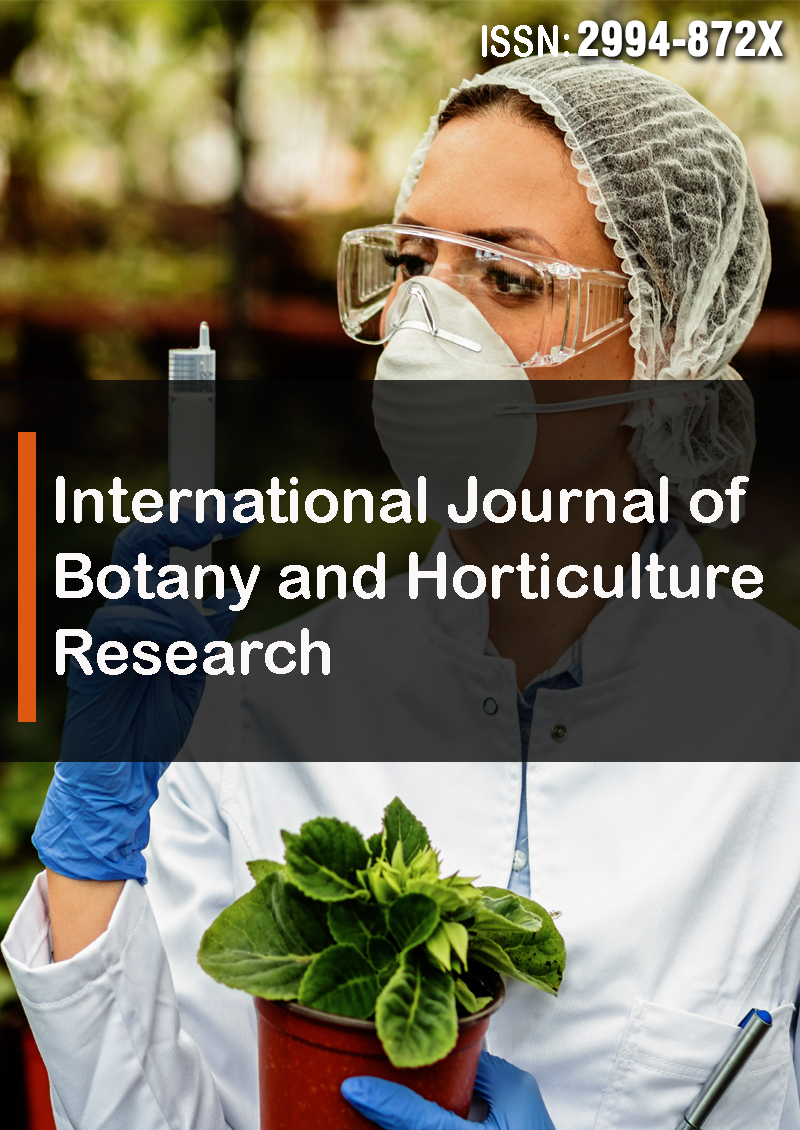Inter-Cropping of Soybean within Maize for Increasing the Crop Productivity and Cropping Intensity in the Coastal Region of Bangladesh
Abstract
Gazi Nazmul Hasan, Md Mahmudul Hasan Khan, Md Rashidul Hasan Anik, Md Mominul Islam, Md Mainul Islam, Shomoresh Roy and Rojina Akter
A field trial was conducted at Bhola sadar and Daulatkhan during the rabi season of 2020-21 and 2021-22 at the farmer’s field under AEZ-18 to verify the agro-economic performance of intercropping of Soybean with Maize and to ensure the maximum utilization of the land for higher yield, Land Equivalent Ratio (LER) and economic return. The experiment was laid out in Randomized Complete Block Design on farmer’s field condition in Bhola sadar. Four treatments combination of different seed rate of mustard and cowpea viz., T1 = Sole maize, T2 = Sole Soybean, T3 = Two row maize (60cm x 25cm) with 2 row Soybean (30cm x 6cm), T4 = Pair row maize (120cm x 25cm) with 4 row Soybean (30cm x 6cm). Variety was BARI Hybrid Maize-16 and BARI Soybean-6. In case of maize no. of cobs plant-1, 1000-grain wt. (g) of maize was significantly influenced by intercrop combination in two consecutive years. Plant population was higher (7.13cm & 6.87 cm) in T1 treatments followed by T3 treatments (7.13cm & 6.87cm) and lower plant population was from T4 treatments (6.38cm & 6.12cm) due to pair row maize combination in two consecutive years. The highest no. of grains cob-1 (545 & 558) was recorded from T1 followed by T4 (536 & 539) and the lowest (518 & 496) was obtained from T3 treatment in 2021 & 2022 respectively. The highest maize grain yield (7.83 & 7.92 t ha-1) was obtained from sole maize in both the years. Grain yield (1.72 & 1.82 t ha-1) of sole soybean was significantly higher and lowest soybean grain yield (1.30 & 1.25 t ha-1) was obtained from T3 treatment in 2021 & 2022 respectively. The highest Maize Equivalent Yield 9.41 t ha-1 and 9.63 t ha-1 was recorded from T3 intercropped combination in two consecutive years (Table 3a & 3b). In T4 treatment, the LER was higher 1.80 & 1.71 and LER was lower 1.67 & 1.60 from T3 treatment in both years. Growing maize and soybean in intercropping under rainfed condition resulted in higher LER (Table 4) when grown as T3 and T4 indicting beneficial association between the two.



